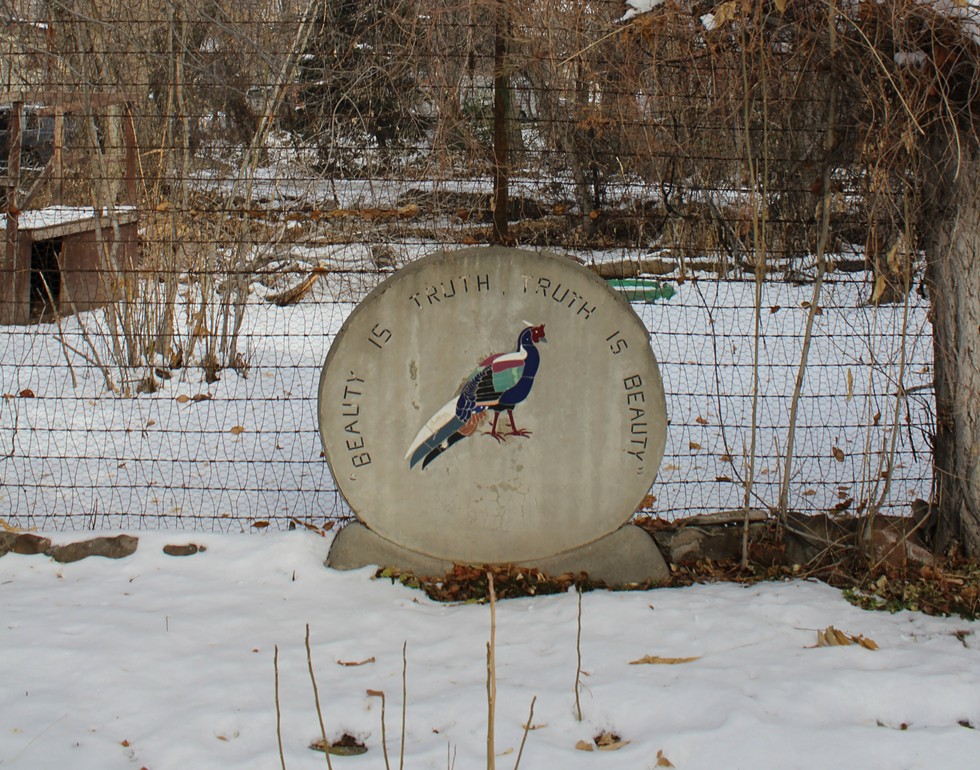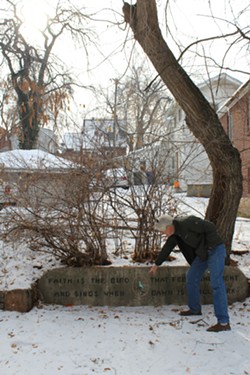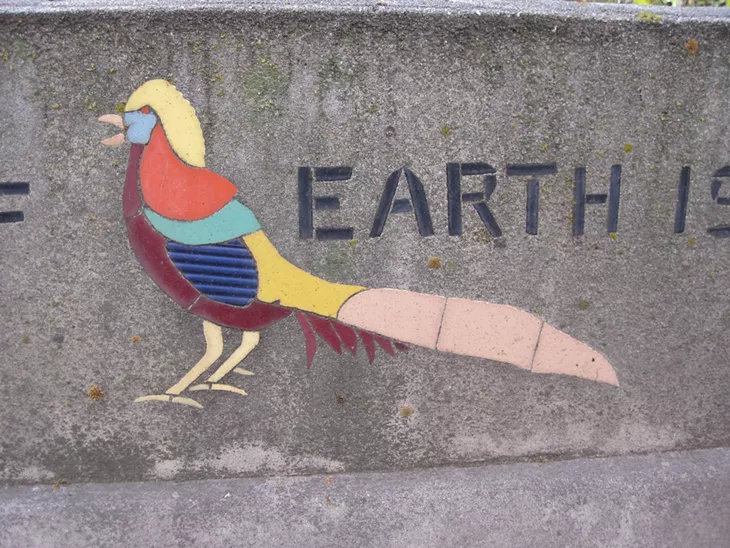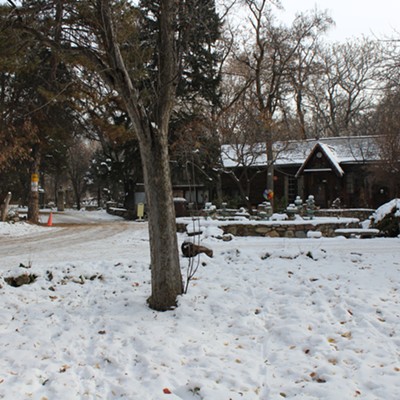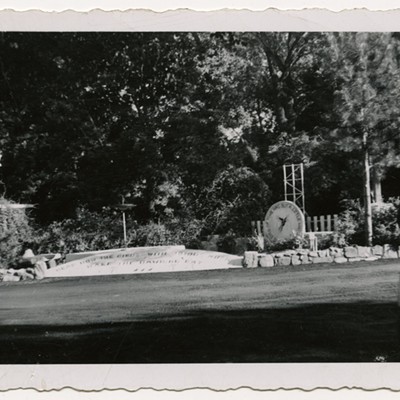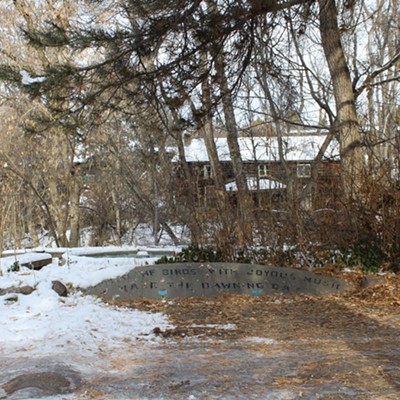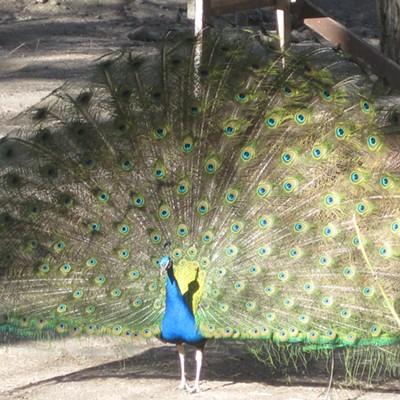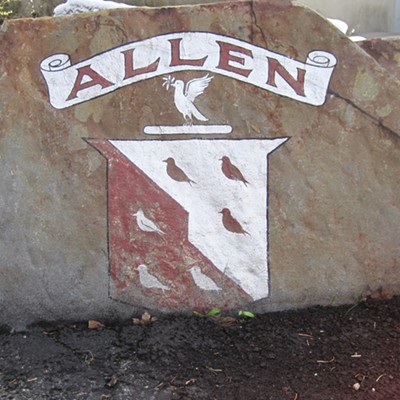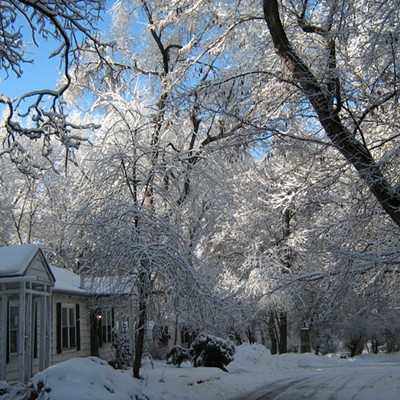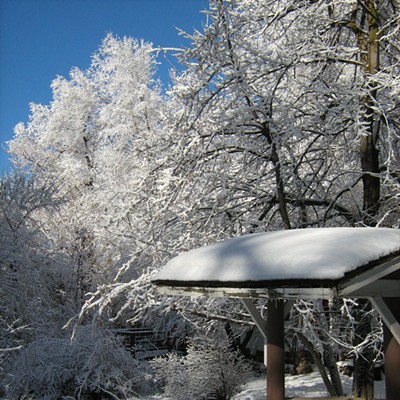Year
For years, gate-crashing “Hobbitville”was a daring way for intrepid Salt Lake City teenagers to kill an evening. Ignoring the “No Trespassing” signs, the emboldened youths would slink around the grounds’ folk art—stone structures and poetic quotes scattered throughout the property’s eight acres—in search of the little people that urban legend foretold lived there. But their thrill would often be cut short by members of the Allen family, the property owners, who would chase them out of the sleepy neighborhood.
Raucous kids weren’t the only people Ruth and Amy Allen Price banished from Hobbitville, a space on 1300 East across from Westminster College that’s officially known as Allen Park. The mother and daughter team, it turns out, also dismissed members of Preservation Utah, a local nonprofit that has long been interested in helping the park’s notable buildings gain a place on the National Register of Historic Places.
“They didn’t try to chase us away with guns or sabers,” Preservation Utah Programs Director David Amott says, contrary to some of the more wild stories he’s heard about the Allen family’s expelling of unwanted guests. “We could never quite pin them down. We would make headway, and they would fall off the radar. They wouldn’t return calls. There was just not an obvious way forward.”
Utah Division of State History’s Cory Jensen is on a similar boat. “No one has contacted us about nominating the property to the National Register of Historic Places,” Jensen, who handles nominations statewide, tells City Weekly in an email. “However, from what I understand, it could be eligible if no major non-historic changes have been made to the buildings or landscape—but that would need to be determined.”
Dr. George A. Allen acquired the expanse that would become his namesake park in 1931. Credited with conceiving the Salt Lake Zoological Society, Dr. Allen kept zoo animals on his property, giving free reign to an elephant, chimp and reindeer, which presumably lived peacefully alongside Allen family pets that included a raccoon, a coyote and a sandhill crane named Sandy. The physician also carted old homes into the hamlet. Over the coming decades, he had historic homes, one of which was a log cabin built in Holladay in the 1850s, transported across town and placed in the park, creating several duplexes he named after his kids. A shroud of secrecy soon enveloped the community, and no formal historical designation steps were ever started, though tenants did move into the properties and make them their homes.
Allen Park’s last remaining eight residents were required to leave their apartments Monday. Now, the estate’s fate lies with the probate court, which will sort out what the surviving Allen descendants will inherit given that Ruth and Amy Allen Price have died.
David Hampshire, who wrote a cover story about his 12 years as a Hobbitville resident in last week’s issue, remains “terrified” his old stomping grounds will likely be gutted to profit. It’s a wonderful community, he says, a paradise so shaded by massive trees that residents don’t need air conditioning in the summer. A place of wonderment and a callback to a simpler past where neighbors knew one another and took care of community fixtures, like the peacocks that roamed throughout the grounds. “I hope that whoever acquires the property will keep some of the amenities in here,” Hampshire muses. “It really is a little town of its own within the city.”
Fearing the property will soon morph into its ticky-tacky Sugar House surroundings, Amott says his preservation group will keep an ear to the ground and try to identify parties that might be interested in sharing Allen Park’s history with future Salt Lake City residents. “We are looking for partners in the community to find a way to preserve Allen Park, [or] at least key elements of that property, for future generations of Salt Lake City resident to enjoy,” he says. “Whatever party does take it on, we’d love to work with [them] and find a way to, as much as possible, preserve the vision of Dr. Allen when he made this unique site.”
Amott suggests private developers could apply for tax credits after electing to place the buildings on the National Register. Of course, the duplexes are old and would need to be renovated, as would parts of the overgrown landscape, commitments Amott says were difficult to secure when Preservation Utah contacted Amy more than a decade ago. If a developer were willing to rehab the currently standing buildings and rent them out, they could also receive substantial tax credits from state and federal entities.
“We’re excited to identify partners in preservation for this unique site, and we’re going to be watching it closely and following it as the site’s future reveals itself through effort and time,” Amott says.


